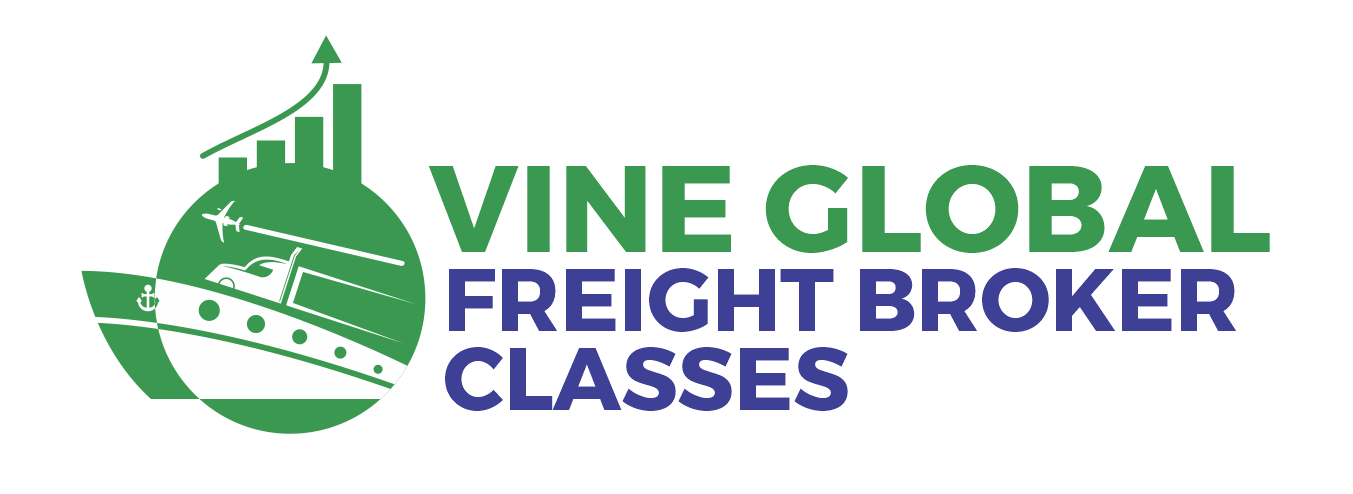VineGlobal Freight Broker Classes
VGFBC BLOG
Import & Export Tips
Navigating Global Supply Chains: A Roadmap for Drivers in America
In the dynamic landscape of global trade, import and export activities play a crucial role in ensuring the smooth flow of goods across borders. Truck drivers, especially those in America, serve as the backbone of the supply chain, connecting manufacturers, suppliers, and consumers. To optimize efficiency and overcome challenges, it’s essential for drivers to be well-versed in import and export processes. In this blog post, we will explore key tips and insights that serve as a roadmap for drivers in America navigating the complexities of the global supply chain.
- Understanding Import and Export Basics:
Before hitting the road, it’s crucial to grasp the fundamentals of import and export processes. This includes knowing the documentation required for crossing borders, understanding customs regulations, and being aware of the specific rules governing the transportation of goods between countries.
- Stay Informed about Trade Agreements:
Knowledge of trade agreements is pivotal for drivers in the global supply chain. Stay updated on agreements like the United States-Mexico-Canada Agreement (USMCA) and other international trade pacts. Understanding the terms and conditions of these agreements can significantly impact the ease of cross-border transportation.
- Utilize Technology for Documentation:
Embrace digital solutions for handling documentation. Electronic Bill of Lading (e-BOL) and Electronic Proof of Delivery (e-POD) systems can streamline paperwork, reduce errors, and expedite the customs clearance process. Many countries are moving towards paperless trade, and tech-savvy drivers are better equipped to adapt.
- Compliance with Customs Regulations:
Customs compliance is a non-negotiable aspect of international trade. Drivers should be familiar with the customs regulations of the countries they are operating in. Adhering to these regulations ensures smooth transitions at border crossings and prevents delays in the supply chain.
- Security and Safety Measures:
Prioritize cargo security and safety. Implementing best practices for securing loads and ensuring the safety of the goods during transportation not only protects the cargo but also contributes to a positive image for the driver and the shipping company.
- Cultural Sensitivity and Communication Skills:
Effective communication is key when interacting with individuals from different cultures and backgrounds. Understanding and respecting cultural nuances can contribute to smoother interactions at border crossings and facilitate better collaboration with international counterparts.
- Plan for Contingencies:
The global supply chain is susceptible to unforeseen challenges. Drivers should be prepared for unexpected events such as weather-related issues, geopolitical changes, or sudden shifts in regulations. Having contingency plans in place can help minimize disruptions and keep the supply chain running.
- Collaborate with Customs Brokers and Freight Forwarders:
Partnering with experienced customs brokers and freight forwarders can be invaluable. These professionals can offer guidance on regulatory matters, assist with paperwork, and help drivers navigate the intricacies of the import and export process.
- Invest in Professional Development:
Continuous learning is essential in the ever-evolving world of global trade. Drivers should invest in professional development opportunities to stay updated on industry trends, technological advancements, and changes in regulations that may impact their work.
10. Environmental Considerations:
With a growing emphasis on sustainability, drivers should be aware of environmental regulations and best practices. Opting for eco-friendly transportation options and adopting fuel-efficient practices not only align with global sustainability goals but can also lead to cost savings.
Conclusion:
As drivers embark on the journey of navigating the global supply chain, a comprehensive understanding of import and export processes is paramount. By staying informed, embracing technology, and prioritizing compliance and safety, drivers in America can serve as effective partners in the international trade network, contributing to the efficiency and resilience of the global supply chain. This roadmap provides a solid foundation for drivers to successfully navigate the challenges and opportunities presented by the interconnected world of trade.
- 125 Walter Way, Fayetteville, Georgia
- info@vineglobalfreightbrokerclasses.com
- +1 877 325 6237
